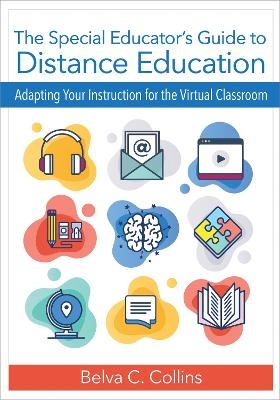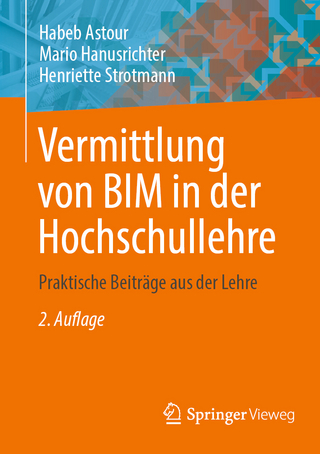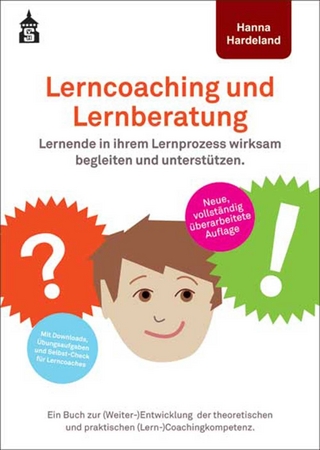
The Special Educator's Guide to Distance Education
Brookes Publishing Co (Verlag)
978-1-68125-503-3 (ISBN)
Distance education services are an effective way to meet the needs of students with disabilities, but few special educators get the preparation they need to conduct high-quality instruction remotely. All the fundamentals are in this one-of-a-kind guide, the first dedicated book on distance learning for special educators.
With contributions from more than 35 experienced educators, this guide covers all types of distance learning from Grades PreK through 12—both real-time and asynchronous, from higher-tech online teaching to instruction with prepared materials. Special educators will get foundational knowledge on the principles and recommended practices of virtual learning, and then discover specific strategies for delivering behavioral, academic, and social supports at a distance. Up-to-date research blends seamlessly with practical action steps, giving educators a reliable and immediately useful guide to the most successful virtual learning practices.
Required reading for both pre- and in-service special education teachers, this timely book clarifies what effective and engaging distance education looks like from preschool through high school—and how to maximize its benefits for students with a wide range of disabilities.
LEARN HOW TO:
adapt your curriculum and instruction for virtual learning
select and use technology to support learners and families
make skillful adaptations for students with physical, sensory, and communication challenges
teach both reading and STEM skills at a distance
respond to challenging behavior and mental health needs in a virtual environment
collect student data and monitor IEP objectives
meet the needs of culturally and linguistically diverse students
plan smooth student transitions at a distance
SPECIAL FEATURES: Reinforce and enhance your learning with chapter objectives, case studies, reflection questions, and lists of helpful tools, apps, and resources to explore.
Belva C. Collins, Ed.D., served as a professor and chair in the Department of Special Education and Child Development at the University of North Carolina at Charlotte and in the Department of Early Childhood, Special Education, and Counselor Education at the University of Kentucky. She now holds the title of Professor Emeritus at both institutions. Dr. Collins began her career as a teacher of students with intellectual disability in rural Southwestern Virginia before coming to the University of Kentucky to work as a research assistant on several federally funded grants to validate the use of response prompting strategies in special education. She continued this line of research throughout her career in higher education and was successful in guiding the applied research of her students in investigating variations of systematic instruction in classroom and community settings. This work provides the foundation for this text. In addition to disseminating her own scholarly writing, Dr. Collins served as the executive editor of Rural Special Education Quarterly, the primary publication of the American Council on Rural Special Education (ACRES). Recent awards include the ACRES Eagle Award for service to rural special education, the North Carolina Teacher Educator Award, and the TED-Pearson Award for excellence in teacher education. She now devotes her time to writing and presenting on the topics of systematic instruction and special education teacher leadership.
About the Downloads
About the Editor
About the Contributors
Author’s Note
Acknowledgements
Dedication
SECTION I: ESSENTIAL PRINCIPLES AND PRACTICES
Chapter 1: We Do What We Have to Do! How and Why Distance Education in Special
Education Is Evolving
Chapter 2: What Does Online Instruction Look Like? Preparation for Distance Education
Appendix 2.1
Appendix 2.2
Chapter 3: How Do I Keep My Students Interested Online? How to Conduct Engaging
Instruction in an Online Environment
Chapter 4: How Is My Student Going to Learn If They Aren’t in School? How to
Conduct and Coach Direct Instruction at a Distance
Chapter 5: How Can I Track My Student’s Progress If They Aren’t in the Classroom?
How to Assess Learning and Collect Student Data at a Distance
Chapter 5 Appendix
Chapter 6: Which Tools Are Right for Me? How to Select and Use Technology
SECTION II: PROVIDING BEHAVIORAL, ACADEMIC, AND SOCIAL SUPPORTS
Chapter 7: How Do I Apply Classroom Rules in a Virtual Classroom? The ABCs of
Providing Behavioral Support in a Virtual Environment
Chapter 8: How Do I Assist My Students at a Distance? How to Use Assistive
Technology to Support Learners
Chapter 9: How Do I Collaborate on Instruction at a Distance? Using High-Leverage
Practices in Special Education to Teach Reading at a Distance
Chapter 10: All SySTEMs Go: Teaching STEM Through Nontraditional Instruction
Chapter 11: How Does Distance Education Impact Young Learners? How to Work With
Young Children at a Distance
Chapter 12: We’re All in This Together: Meeting the Needs of Culturally and
Linguistically Diverse Learners
Chapter 13: How Do We Reach Struggling Students? How Teachers and Counselors Can
Respond to Student Mental Health Needs
Chapter 14: So, What Comes Next? How to Address Planning Student Transitions at a
Distance
SECTION III: TEACHER LEADERSHIP
Chapter 15: Where Will We Go From Here? Building a Case for Special Education
Teacher Leadership in Distance Education
Index
| Erscheinungsdatum | 01.12.2022 |
|---|---|
| Verlagsort | Baltimore |
| Sprache | englisch |
| Maße | 178 x 251 mm |
| Gewicht | 211 g |
| Themenwelt | Sozialwissenschaften ► Pädagogik ► Erwachsenenbildung |
| Sozialwissenschaften ► Pädagogik ► Sonder-, Heil- und Förderpädagogik | |
| ISBN-10 | 1-68125-503-0 / 1681255030 |
| ISBN-13 | 978-1-68125-503-3 / 9781681255033 |
| Zustand | Neuware |
| Haben Sie eine Frage zum Produkt? |
aus dem Bereich


